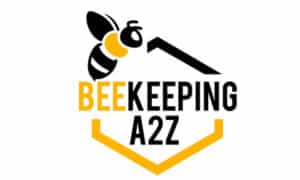The most hardworking creature in an apiary are the honeybees. They go out, fly around, pick nectar and go back home to make some sweet and delicious honey. This is literally the blood that keeps the apiary pumping and productive.
It is the pride and joy of beekeepers to see their honeybees healthy and productive, and producing the most delicious honey in the entire area.
Frequency on harvesting honey
The harvest will depend on your country’s climate and plant life. Most beekeepers harvest honey 2 or 3 times a year. You must wait for the cap to be 80% full, or at most 90% and leave some for your honey bees especially when nearing winter. The number of times that you can harvest honey will really depend on your country’s weather conditions. According to a website called Beekeeper Facts, most beekeepers harvest mid June and mid September, depending on how full the hive is. The website added that beekeepers who harvest honey thrice a year are usually labelled as varietal honey.
Varietal honey is predominantly nectar from one variety of flower as described by a blogger named Zeke Freeman. Meaning that the varietal honey was extracted from mostly one kind of flower. For example, some farmers produce Blueberry flower honey because most of the nectar that the swarm has gathered came from blueberry flowers.
Season to season: caring for the honeybees
Since honey bees follow a seasonal pattern, as a beekeeper, you should also take note of this fact and start a calendar rhythm. Tasks are divided by seasons in order for the honeybees to make quality honeys and also to avoid the honey from spoiling or under developing. A blogger named Lauren Arcuri, a beekeeping blogger, enumerated the tasks that you should undertake per season:
Spring Season
Spring is the season where the honeybees will start hiving! Industrious honeybees will be busy all throughout this season as this is the season where the flowers are in full bloom and they can gradually prepare for winter.
- Honeybees will need help in storing food since this is the season after winter, where they have almost consumed their stored food. You need to make sure that the honeybees will not starve and die during this period. Bees will also need to locate flowers where they can get nectar from, so basically the first part of spring season for them is finding blooming flowers.
- Prepare empty hives just in case some of the bees are looking for a new hive to settle into. Position the empty hives near the occupied hives to avoid the chance of losing your beloved honeybees
- You need to harvest honeycomb from an established hive in order to make room for the bees to make more honey
- Check if the queens are still alive, if yes then you need to replace them immediately
Summer Season
This is probably the time where the bees can fend for themselves however they still need to be monitored every now and then.
- You can stop feeding them now since they have accumulated lots of nectar by this point
- Check the sources for water near the hives
- You need to monitor the stronger hives to avoid them robbing the weaker colony
- Check for mites, hornets and other insects that might harm your bees and their hives
- Check if the honey is ready to harvest
Autumn Season
This is the time where you need to harvest more honey since they are preparing for winter already.
- Harvest the honey but not too much, make sure that they will have food for winter
- Monitor the hives and colony for diseases
- Add weaker hives to stronger one so they can withstand winter
- Reduce the hive entrance and make sure that hive is well ventilated.
- Feed the bees if source of nectar is scarce
- Protect the hive from winter winds
Winter Season
Bees will no longer go out from their respective hives. You may need to protect them and make sure that they have ample food to survive the winter season.
- Protect them from winter winds and make sure they are sheltered from the wind
- Always check your hives for winter damages such as ventilation. The condensation will definitely affect the swarm if they are sealed totally
- Check frequently if they have enough food for the winter. Start monitoring them as early as spring, and if their food is not enough you may put pollen patties or other kind of food.
Common Question
How long do bees take to produce honey?
It will take honeybees 3 weeks to gather 450g of honey. Honeybees have one of the most amazing teamwork on earth. It will take 300 honeybees to produce 450g of honey. It is probably one of the most intricate food making in the animal kingdom.
Can you harvest honey the first year?
Weather conditions of your country will greatly affect the harvest. Building a new colony will take time, so it will take one season for them to be able to harvest honey by late summer. However, harvesting in the first year is not impossible but is considered lucky for some since honey bees will need time to adjust and look for flowering plants.
What happens to honey if not harvested?
Not harvesting will not necessarily harm the bees and the hive. It will serve it’s purpose to the honeybees which is to be their food. This will be useful for them in the coming winter season. Honeybees will not work as hard to store food, so it will not negatively affect the honeybees or the hive nor will it expire.
